Table of Contents
Toggle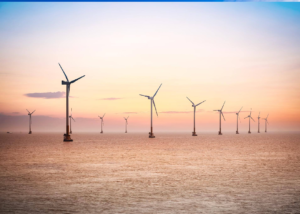 A picturesque view of wind turbines in the ocean, symbolizing renewable energy.
A picturesque view of wind turbines in the ocean, symbolizing renewable energy.
1. Introduction
As the globe progresses towards renewable energy, wind power has evolved into a major opponent in the war against climate change. On the minds of many, however, is whether wind energy can reasonably match conventional fossil fuel-based electricity generation economically.
Although wind energy clearly improves the environment, its economic comparison relies on numerous elements, including government subsidies, technological development, and geographic position.
Wind turbines harness the wind power that converts kinetic energy into electricity, hence generating wind energy. This approach gets ever more efficient and is sustainable and clean.
Over the past few decades, wind energy is swiftly rising as a realistic replacement for fossil fuels. With an eye toward reducing dependency on coal, oil, and natural gas, countries including Denmark, Germany, and the United States have made large expenditures in wind infrastructure. But how does wind energy stack up economically against these traditional energy sources?
2. Understanding the Costs of Wind Energy
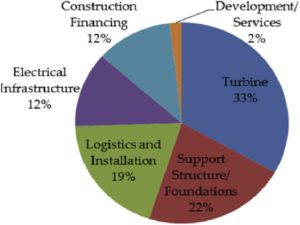
There are several elements of cost involved in wind energy, ranging from the capital costs of establishing wind farms, through continuing maintenance costs, and operational expenses related with producing power. In the last few years, the cost of wind energy has plummeted significantly, mainly due to gains in turbine efficiency, economies of scale, and technological innovations.
Despite these developments, the initial investment to install a wind farm is still very high. But as wind technology improves, the cost of a megawatt of wind power is getting progressively cheaper, and hence more competitive with fossil fuel products.
Wind energy is also significantly cheaper than other sources of renewable energy such as solar in terms of land and space needed for such energy production.
3. Comparing Wind Energy Costs to Fossil Fuels

The costs of wind energy and fossil fuels, when compared, require accounting for both direct and indirect costs. In the case of fossil fuels, the direct costs are extraction, transportation, and conversion to electricity. In addition, the environmental costs including carbon emissions, pollution, and long-term climate change effects need to be accounted for.
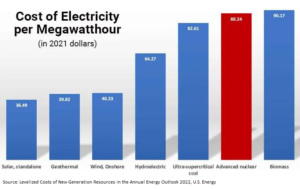
On the other hand, wind energy has practically zero operating costs once the wind farm is established. Its highest cost is the up-front investment in infrastructure, which includes turbines, land, and grid connections.
Moreover, the ongoing maintenance and site leasing cost often prove to be cheaper than the ongoing costs of maintaining fossil fuel facilities, which need to be constantly replenished with fuel and come with costly pollution control equipment.
Where fossil fuel prices can peak and fall dramatically, the expenses of wind energy are relatively more consistent, therefore suitable for long-term energy planning.
4. Government Subsidies and Incentives
Government support is a major force behind the economic competitiveness of wind energy. Lots of governments give various subsidies, including tax incentives and monetary and fiscal policy incentives in a bid to encourage the growth of renewable power sources.
For instance, the U.S. government provides its PTC, under which financial assistance is made available to wind energy projects based on volumes of power that have been produced.
In Europe, countries like Germany and Spain have implemented feed-in tariffs to set a guaranteed price for electricity created by providers of wind energy. Such schemes significantly reduce financial risk in wind energy investments, making it more attractive to developers.
5. Technological Advancements in Wind Energy
Generally, technology is the biggest player in the declining cost of wind power. The design of turbine, for instance, has improved on bigger blades and more efficient generators, which ensures more electricity production from a single wind turbine. Advances in materials and manufacturing techniques have also helped creating and installing turbines very economically.
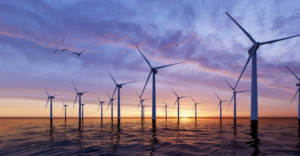
With the use of offshore wind farms, which gather stronger and more uniform winds than onshore installations, the economic opportunity for wind energy is further supplemented. These are basically more expensive to build but are increasingly used as a practical solution for huge demands in energy consumption.
6. The Role of Location in Wind Energy Cost
Location largely determines the cost-effectiveness of wind energy. Wind resources vary considerably from one region to another, thus making wind energy relatively more affordable in regions with consistent and strong wind flows.
With highly favorable wind conditions, wind farms can produce greater power output, which consequently lowers the cost per kilowatt. Places with weak or erratic winds may need additional infrastructure or a hybrid system (such as the combined use of wind energy and solar power or battery storage) to maintain stability in the grid.
7. Grid Integration and Infrastructure Costs

Integrating wind energy into the current electrical grid offers obstacles, particularly in places with poor grid infrastructure. The variable nature of wind power implies that its output must be carefully coordinated with other energy sources to avoid blackouts or grid instability.
Building new transmission lines and energy storage technologies would require tremendous expenses. However, these fees are often seen as a vital investment for the long-term transition to renewable energy.
As technology evolves, the cost of grid connectivity is anticipated to decline, making wind energy even more economically viable.
8. Long-Term Economic Benefits of Wind Energy
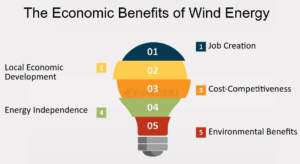
While the initial capital investment for wind energy infrastructure can be enormous, the long-term economic gains are tremendous. Wind farms provide consistent, predictable energy prices, reducing dependent on fossil fuels whose prices are sensitive to worldwide market movements.
Additionally, the running costs of wind energy are minimal, meaning that once a wind farm is created, it may generate electricity for a fraction of the cost of traditional power plants.
The long-term reductions in energy production costs, along with the environmental benefits of cutting carbon emissions, make wind energy a sensible investment for both governments and commercial businesses.
9. Environmental Impacts and Cost Considerations
The economic benefits of wind energy are further amplified by the fact that most fossil fuels carry with them environmental costs. Coal, oil, and natural gas use generate relevant carbon emissions that have significant contributions to climate change, both in an environmental and an economic context.
Wind energy, on the other hand, emits no direct emissions and has low ecological impact, making it a much more sustainable and relatively cost-effective solution in the long run.
10. The Future of Wind Energy in the Global Market
Looking forward, wind energy is poised to play a huge role in the global energy industry. Continued technological progress coupled with lower costs and increased government support are driving this trend, making wind energy more competitive with that of fossil fuels.
With a continued push toward clean energy worldwide, wind power is expected to grow rapidly, which will help bring down the economic and environmental costs associated with traditional energy sources.
11. Economic Viability of Wind Energy
To assess the feasibility of wind energy in economic terms, it is important to analyse both short-term and long-term problems. Although wind energy requires significant upfront investments, notably in infrastructure such as turbines and grid connectivity, operational costs are relatively low once set up.
As wind farms do not rely on steady fuel supply like other power plants that burn fossil fuel, their recurring costs are lower, and they are more tolerant of fluctuations in energy pricing.
As said, advantageous government policies are also beneficial to the wind energy sector in many countries. Besides financial incentives such as tax credits and subsidies, governments provide a way to partly offset the costly initial capital expenses that make it alluring to investors. With time, these incentives can yield considerable returns on investment.
12. Grid Integration and Storage Solutions
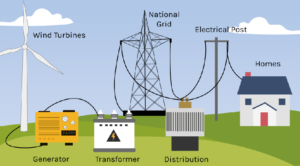
One of the most significant challenges facing wind power is its variability: when winds shift, energy supply becomes unpredictable. Energy grids therefore need to be able to capture power when it’s available and supply it when demand is at its peak.
Developing options for large-scale energy storage like batteries and improvemnts in grid technology are critical to meeting these challenges.The integration of wind power into the grid also has to do with the pre-existing infrastructure that varies by country to country.
In other areas, a lot more investment in the transmission lines is required for connecting these wind farms to populous places or to industrial centres where high electricity demands are present.
Although it is a heavy investment on the infrastructure side, that is considered to be one of the costs of this long-term change towards more sustainable energy mix.
13. Job Creation and Economic Growth
Another key aspect of wind energy’s economic potential is the job creation it produces. Wind energy projects require a wide spectrum of professional workers, from engineers to turbine makers to construction teams.
As the firm continues to grow, it will produce thousands of employment worldwide, contributing to local economies and creating opportunity for skill development in green technologies.
Furthermore, wind energy development can aid local economy, particularly in rural areas where wind farms are typically located. These regions gain from the establishment of wind farms, as they often bring in income from property taxes, land leasing, and employment creation.
Additionally, wind farms offer a relatively steady and long-term source of economic activity, unlike certain traditional industries that are more prone to economic downturns or global commodity price changes.
14. The Role of Technological Innovation
The role of technological innovation can not be understated in the continuous success of wind energy. Modern turbine designs have singificantly improved their efficiency over the last ten years, maximizing energy capture even in lower wind conditions. Offshore wind farms, as mentioned above in Point No. 5, which tap into stronger and more consistent wind sources are an area that revolutionize the industry, though their development is more capital expensive.
Other breakthroughs include floating wind turbines and AI-powered grid management, which will drastically reduce prices and enhance the scalability of wind energy. These technologies will help ensure that wind energy is not only a viable option but also a leading source of energy in the global market.
15. Sustainability and Environmental Considerations
An attractive alternative from an environmental point of view, wind energy is not hazardous to health in terms of emitting pollutants and greenhouse gasses during the production of energy. It contributes to a cleaner and healthier environment and supports global efforts to cut carbon emissions and prevent climate change.
While the environmental footprint of wind energy is small, it is not entirely without any problem. The fabrication and disposal of wind turbine parts, like blades, can pose some environmental problems, but new developments in recycling and materials science are working to rectify these issues. Finally, wind farms must be constructed with care to avoid impact the species and ecosystems around them.
Despite these challenges, it remains one of the cleanest and most sustainable forms of power accessible today. For this reason, wind power is crucial in reducing carbon footprints of the energy sector globally as governments go about fulfilling their climate pledges and transitioning to renewable resources.
16. Future Prospects of Wind Energy
Looking ahead, it appears the growth in wind power production should continue to be upward as most nations worldwide continue to make higher-profile commitments toward renewable energies that in turn is going to promote greater capital into wind development.
What’s more, even wind energy cost itself would lower over time, placing greater regions and countries, more accustomed with fossil fuel sources, in aneven stronger competitive and investment position.
In addition, growing attention to energy independence in light of geopolitical tensions and volatility in global oil prices are encouraging countries to diversify their energy sources. Wind energy, like other renewables, including solar and hydroelectric electricity, offers a reliable and sustainable alternative for the reduction of dependence on foreign oil and gas.
Technological advances in energy storage and smart grid systems will also make wind energy more reliable and cost-effective, driving its adoption. With the global need for clean energy development, it is likely that wind power will play an ever-larger role in the future of the global energy industry.
17. Final Thoughts
While wind energy may have faced economic adversity in the past, there is hope for its future. Technological progress, decreasing costs, government incentives, and increasing demand for clean energy are making wind energy a viable and competitive alternative to fossil fuels. This is where wind power stands out amidst all the other renewable energy sources. : not just for its environmental benefits but for its economic potential as well.
With continuous investment and innovation, wind energy would become one of the most important keystones in establishing a cost-effective and environmentally friendly future energy scenario wherein use of fossil fuel is gradually reduced, hence mitigating climate change through job opportunities and technical inputs.
18. Conclusion
The economics of wind energy is changing rapidly. As technical improvement continue to enhance efficiency at lower cost, wind energy is becoming an increasingly competitive rival to fossil fuels. Although initial investment in wind infrastructure remains high, its long-term financial and environmental benefits are compelling.
Wind energy offers a reliable, low-emission alternative that can help reduce global reliance on polluting fossil fuels, contributing to both economic growth and climate stability. With continuous government backing and technological innovation, wind power could play a crucial role in influencing the future of global energy.
19. FAQs
1. What are the main costs associated with wind energy?
Wind energy involves high initial capital costs for infrastructure but has low operational costs once the farm is established. The primary expenses include turbine installation, land leasing, and maintenance.
2. How does wind energy compare to fossil fuels in terms of cost?
Wind energy is increasingly competitive with fossil fuels, especially considering the long-term operational savings and the environmental costs of fossil fuel use.
3. What government incentives exist for wind energy?
Many governments offer tax credits, feed-in tariffs, and subsidies to encourage the development of wind energy projects, such as the Production Tax Credit (PTC) in the U.S.
4. Does wind energy have environmental benefits?
Yes, wind energy is a clean, renewable source of power that does not produce direct emissions, reducing the environmental impact compared to fossil fuels.
5. How do technological advancements affect the cost of wind energy?
Advances in turbine efficiency and offshore wind technology have significantly reduced the cost of wind energy production, making it more competitive.
6. Is wind energy economically viable in all locations?
The economic feasibility of wind energy depends on geographic factors, such as wind consistency and strength. Some regions may require additional infrastructure to make wind energy viable.
7. What are the long-term benefits of investing in wind energy?
Wind energy offers long-term savings in energy costs, stable pricing, and a reduced carbon footprint, making it a beneficial investment for both economic and environmental reasons.
8. What challenges does wind energy face in terms of grid integration?
Wind energy’s intermittent nature requires significant grid management to maintain stability, which can involve high costs for energy storage and transmission infrastructure.
9. Can wind energy replace fossil fuels entirely?
While wind energy is a critical part of the transition to clean energy, a mix of renewable sources and storage solutions will likely be needed to fully replace fossil fuels.
10. How is the future of wind energy looking?
With declining costs, technological advancements, and increasing government support, wind energy is expected to grow rapidly and become a major player in the global energy market.
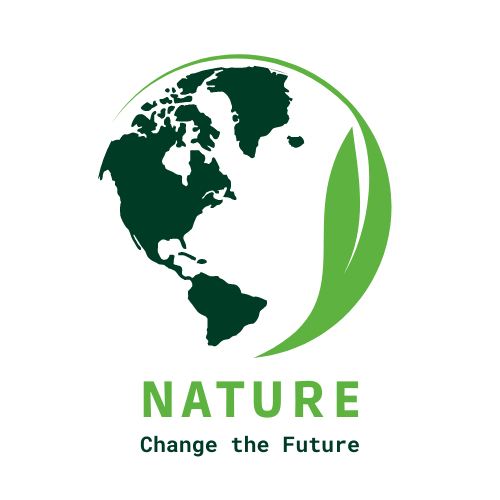

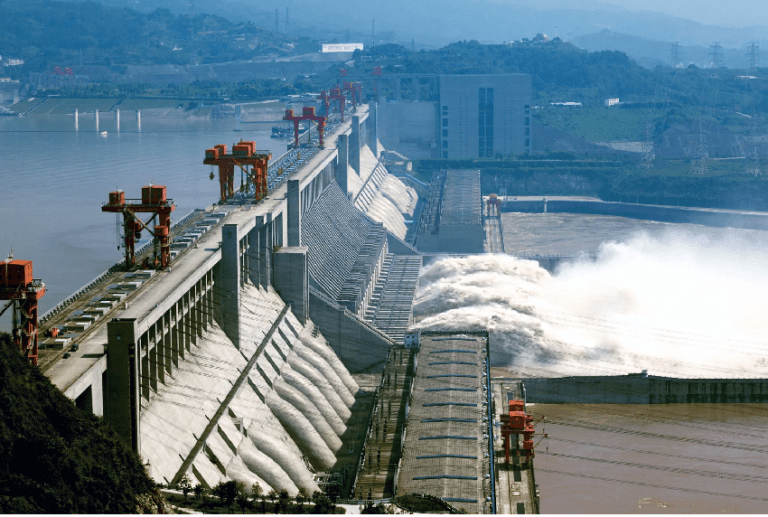
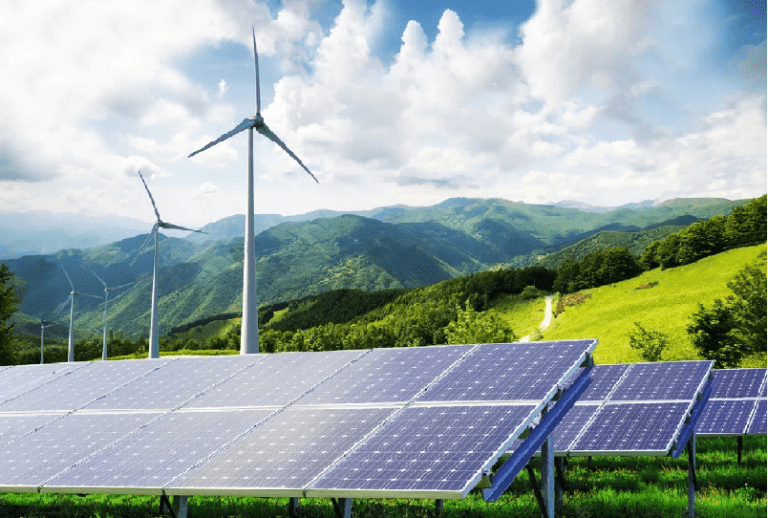
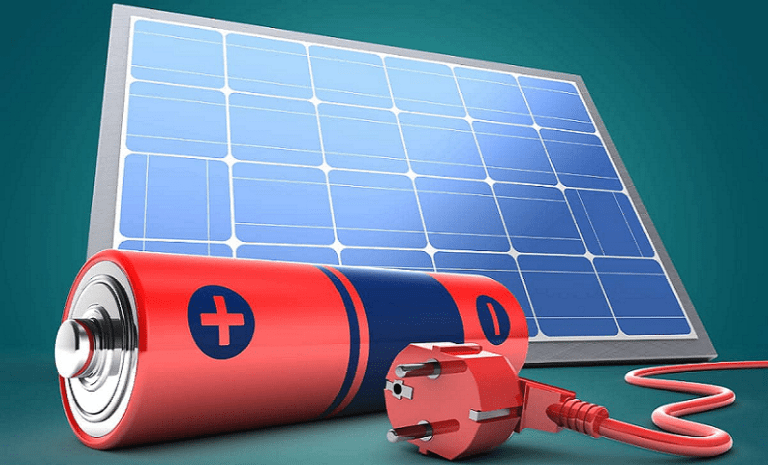
“I appreciate the detailed explanation, very helpful!”
Your article helped me a lot, is there any more related content? Thanks!
Your article helped me a lot, is there any more related content? Thanks!